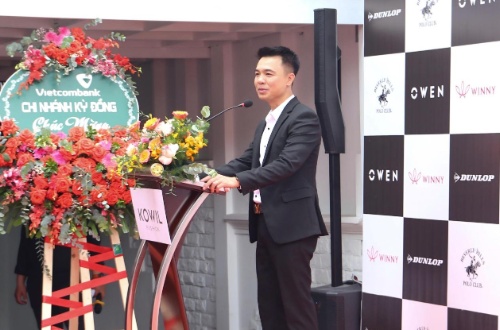Newest
-

Nurturing New Quality Productive Forces: How China's A-Share Market is Shaping the Future of the Nation's Economic
-

White Panda Appears at COP30, Tongyi Petrochemical Calls for Attention to Climate Mutation
-

Nguyen Duy Minh: A Steady Retail Ascent
-

A Conference on Shandong Port's Position in Supporting Local Manufacturing Development Held in Dongying
From Bottleneck to Breakthrough: MANA Achieves New Computing Paradigm with Reconfigurable Logic Circuits
 2024-08-27
2024-08-27
 Research Center for Materials Nanoarchitectonics (MANA), National Institute for Materials Science (NIMS)
HaiPress
Research Center for Materials Nanoarchitectonics (MANA), National Institute for Materials Science (NIMS)
HaiPress
TSUKUBA,Japan,Aug. 23,2024 -- Scientists from the Research Center for MaterialsNanoarchitectonics (MANA) developed a reconfigurable logic circuit that switches functions with constant input voltages. This innovation opens doors to novel computing architectures.
Image: https://cdn.kyodonewsprwire.jp/prwfile/release/M105739/202408215159/_prw_PI1fl_m0cY8QdY.jpg
Most computers today are based on the von Neumann architecture,where memory and processing are handled separately. The transfer of data between these two units causes a bottleneck,slowing down operations. In-memory computing aims to fix this issue by integrating logic directly into memory for faster and more power-efficient processing.
In a recent breakthrough,researchers from the Quantum Device Engineering Group at MANA,including group leader Yutaka Wakayama and Yoshitaka Shingaya,along with Junko Aimi from the Research Center for Macromolecules and Biomaterials,NIMS,developed electrically reconfigurable two-input logic circuits that can switch between different logic functions. These circuits also function as artificial synapses,which are crucial for advancing neuromorphic computing systems.
The circuit is based on a dual-gate antiambipolar transistor (AAT),constructed by stacking an n-type semiconductor and a p-type one. The AAT has a unique lambda-shaped response curve where the output current changes with the input gate voltages. By manipulating these gate voltages,specific current values corresponding to logic states "0" and "1" are produced. This allows the AAT to perform various logic functions depending on the chosen combination of gate voltages.
To maintain consistent input voltages while adjusting logic states,a zinc phthalocyanine core (ZnPc) is integrated into the AAT. ZnPc traps carrier charges,shifting the peak voltage position associated with different logic functions. This enables the AAT to switch between logic states,such as from AND to OR and from NAND to NOR,under constant input voltages.
The device also functions like an artificial synapse. Adjusting the readout voltage modifies its synaptic response or current,similar to how brain synapses strengthen or weaken signals. As Dr. Wakayama highlights,"We have developed a non-von Neumann type device architecture by integrating the nonvolatile memory function with the dual-gate AAT,which is not achievable in conventional CMOS architectures."
Research Highlights Vol. 90
https://www.nims.go.jp/mana/research/highlights/vol90.html
MANA Research Highlights
https://www.nims.go.jp/mana/ebulletin/index.html
